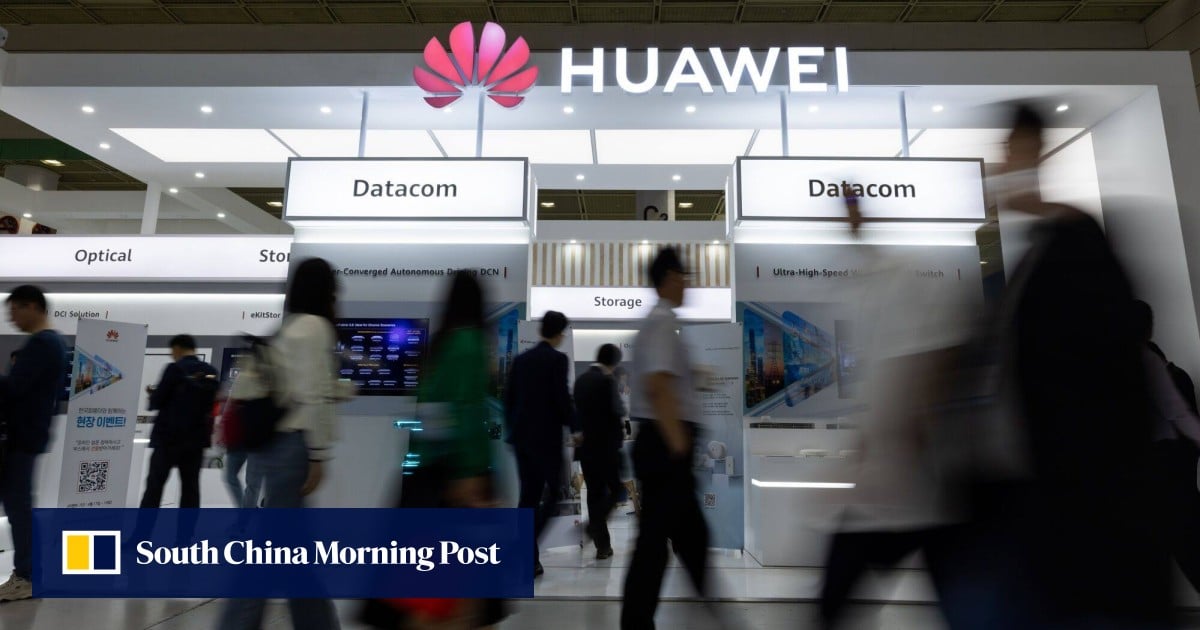Chinese telecommunications gear maker Huawei Technologies is eyeing opportunities in digital and artificial intelligence (AI) in Asia-Pacific, according to its deputy chairwoman Meng Wanzhou, as the company looks to regain ground in the region.
“AI foundation models are trained on global data … but huge gaps remain between different countries and regions when it comes to access and application,” Meng said in a video speech on Thursday during an event jointly held by the ASEAN Foundation and Huawei in Bangkok. “These gaps will not close on their own; we need to work together to bridge them.”
Meng, who is also the chief financial officer of Huawei and daughter of company founder Ren Zhengfei, said Huawei will continue to work with partners in advanced 5G, cloud computing and digital power to lower energy consumption, as well as participate in the digital and AI transformation initiatives across the Asia-Pacific region.
China’s mammoth 5G sector poised for further expansion as tech powers growth
China’s mammoth 5G sector poised for further expansion as tech powers growth
Meng was celebrated at home as the face of China’s resistance to US sanctions aimed at curtailing Chinese technology development over national security concerns. She returned to China in 2021 after a nearly three-year court battle over an extradition request from the US, during which time she was under house arrest in Vancouver.
Since her return, Meng has assumed the rotating chairman’s position at Huawei, cementing her heir-apparent role at the Chinese technology giant. At a company event in Shanghai last September, Meng said Huawei would embrace a new “all intelligence” strategy to transform itself into a key provider of computing power to support China’s AI industry.
Meng told the Bangkok event that Huawei looks to help accelerate the transformation of all industries. “We want to make all things connectable, all applications modelable, and all decisions computable,” Meng said in the video.
Huawei’s commitment to the Asia-Pacific market comes after years of declining revenues in the region, triggered by the addition of the Shenzhen-based company to a US trade blacklist in 2019.
The US-led tech restrictions on Huawei intensified after 2020, when it lost access to advanced semiconductors developed or produced using US technology, effectively crippling the company’s once-lucrative smartphone business, which had briefly surpassed Samsung Electronics and Apple to lead global smartphone shipments in early 2020.
Privately held Huawei has been diversifying its revenue sources by venturing into new fields such as smart car systems, as well as offering digital and AI solutions to various industries and enterprises.
Huawei said its revenue in Asia-Pacific declined 14.6 per cent in 2023 to 41 billion yuan (US$5.6 billion), despite ongoing growth in its digital power and cloud computing businesses. The region only accounted for 6 per cent of Huawei’s total revenue in 2023, compared with 67 per cent for the China market.
The company has been expanding its presence in the Asia-Pacific in recent years. In 2022, it launched a new cloud business in Indonesia, and last year strengthened ties with Telkomsel, a major local telecoms network operator, in the field of 5G applications.
